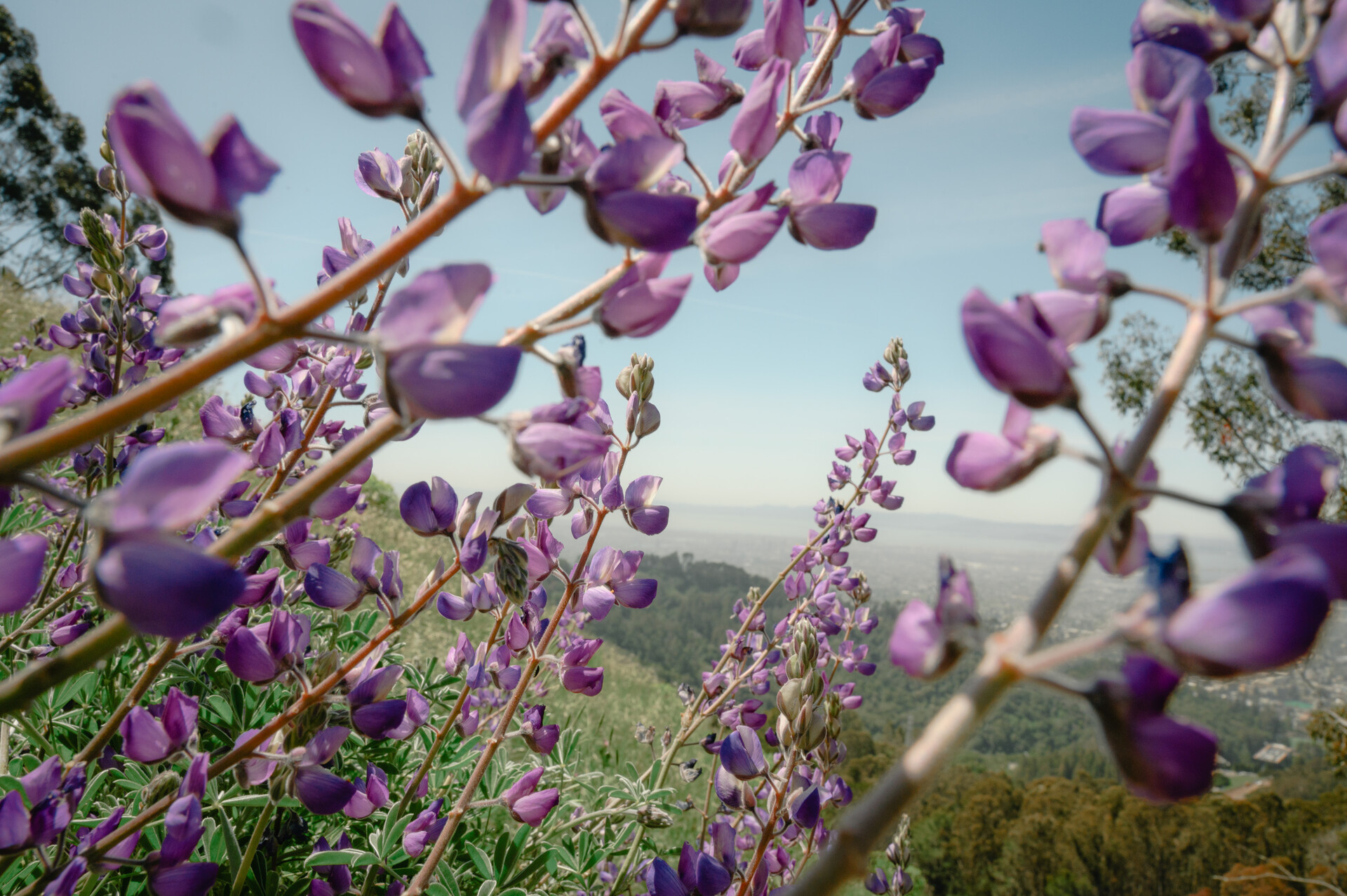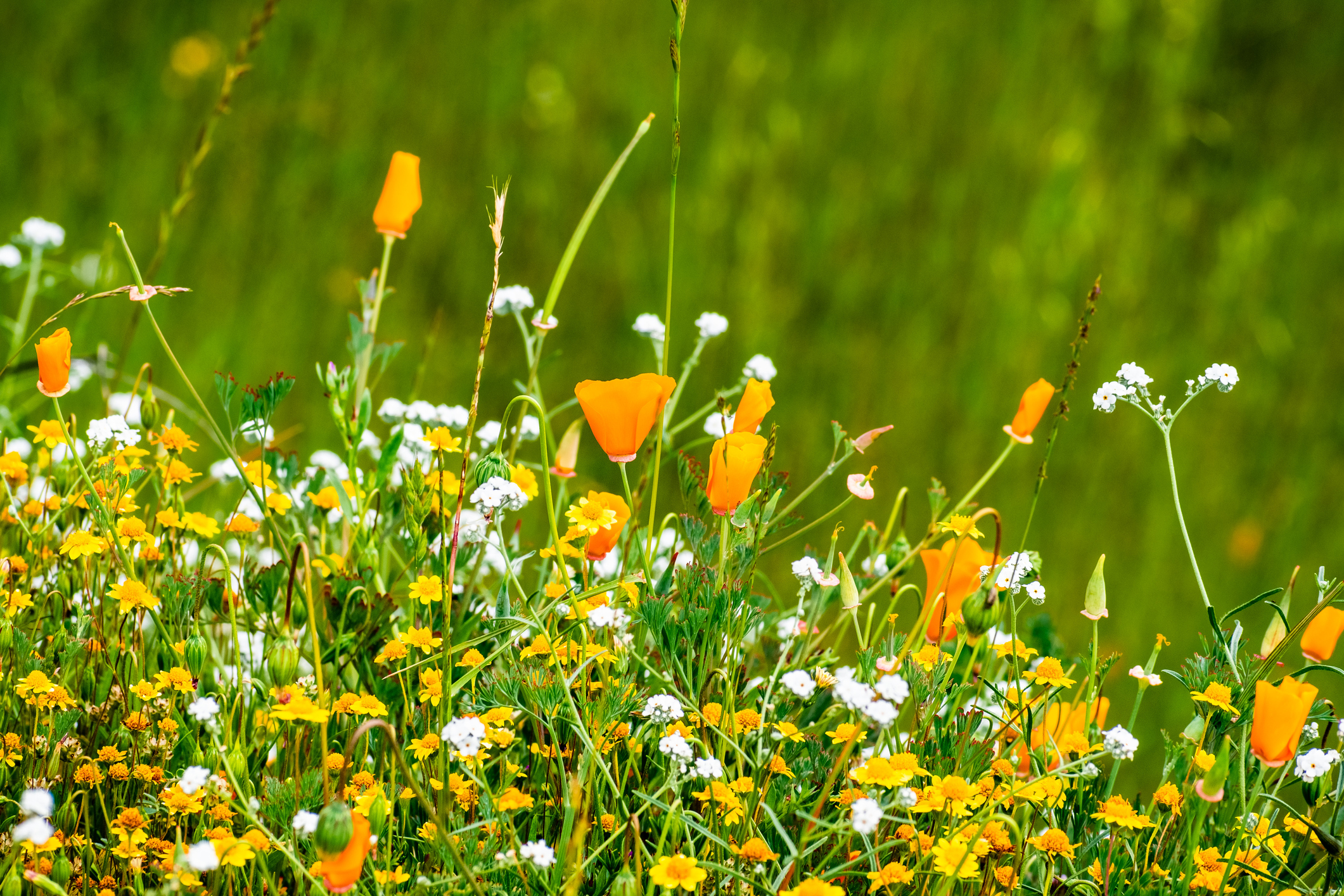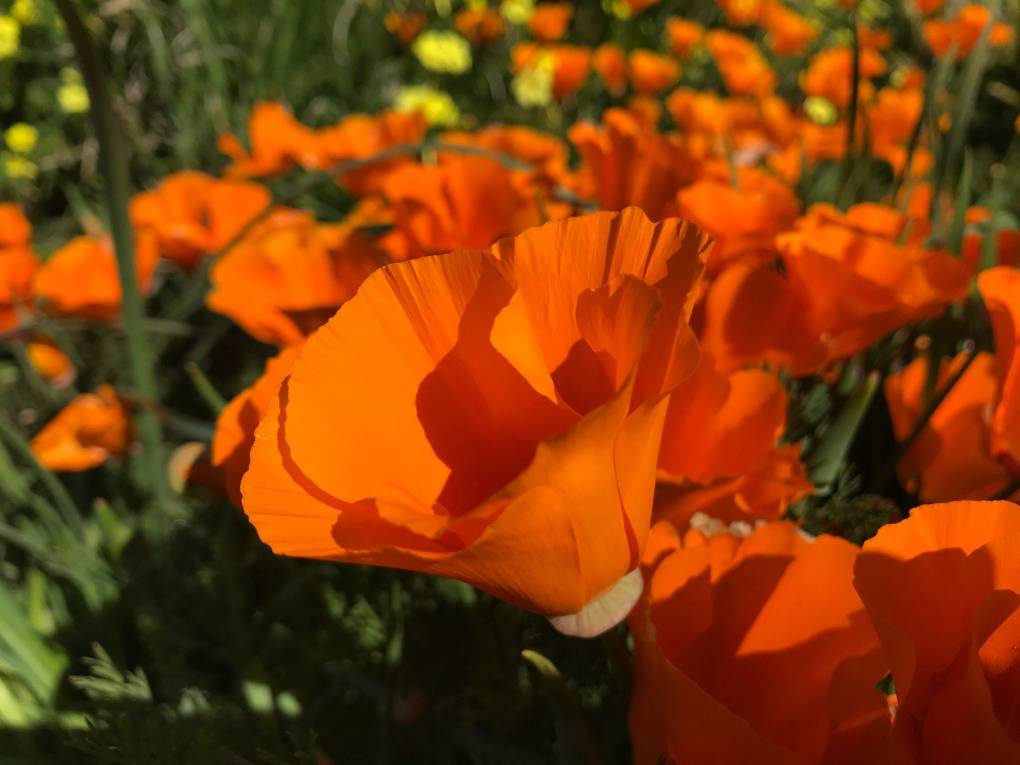Spring is almost here. And with over 8,000 species of plants in California — more than half of them native to the state — it’s going to be an exciting place to experience the burst of colors from thousands of species of wildflowers the region has to offer.
Top Spots to See Wildflowers Blooming Across the Bay Area
California’s biodiversity is thanks to our unique Mediterranean climate, geology, and geography. With a crescent of mountains, California is geographically isolated from the rest of North America.
“We have the Cascade Mountains up in the north, the Sierra running along the east, and the transverse range in the south. And then, of course, bound by the ocean on the west,” said Lewis Reed, rangeland ecologist and botanist at Midpeninsula Regional Open Space District.
This geographic isolation, Reed explained, essentially limits the dispersal of organisms and, more importantly, gene flow between related organisms.
“This means that over evolutionary history, we’ve ended up with a lot of unique things in California that are different than their ancestors elsewhere in North America,” Reed said, referring to the thousands of species of native plants in the state, including wildflowers.
Will we get a 2024 ‘super bloom’?
In 2023, nature lovers were thrilled by images of Southern California’s “super blooms” visible from space. But “super bloom” is not actually a scientific term, as Cameron Barrows, conservation ecologist at the Center for Conservation Biology at UC Riverside, told KQED.
Instead, it’s used — mainly by the media — to describe incredible and uncommon bloom events, when many different species of wildflowers bloom at the same time. “There might be anywhere [between] 50 to 100 different species in bloom during a super bloom event,” Barrows said.
While it’s still too early to tell if the Bay Area will be blessed in 2024 with the same amount of beautiful blooms we had in previous years, the amount of rain and how that rain is distributed relative to temperatures are factors to consider when forecasting the intensity of wildflower blooms, Reed said.

One way to look for signs of a big bloom is to go out early in the season once flowers start to germinate. Lupines, a common wildflower in our region, for example, have very distinctive leaves that develop as the plant grows and are easy to recognize.
“If you learn your habitat of the areas that you’d like to explore and learn what to look for, you can get some hints well before those plants are going to bloom,” Reed said.
Reed recently discovered a clustered tarweed (Deinandra fasciculata) in the Peninsula — a yellow-flowered plant not seen in San Mateo County for over a century.
“It’s one of the neat things about living and working in our area,” Reed said. “There’s always discovery to be made. It’s never the same from year to year.”
Where and when can you see blooms in the Bay Area?
When you’re heading out to enjoy the sight of these wildflower blooms, remember to respect the environment by staying on marked paths. Avoid picking any flowers or trampling on them — even accidentally. And remember to pack out anything you pack in on the trail.
“We want to encourage folks to feel welcome, and to come out to the preserve to see this beautiful gift of biodiversity that we have,” said Ryan McCauley, public affairs specialist at Midpeninsula Regional Open Space District. “But we also really want to encourage folks to be respectful.“
McCauley also encouraged people to try to avoid visiting a bloom at peak times — like on the weekends. This way, you’ll be able to enjoy observing the different species of wildflowers without the large crowds, which could also raise the risk of accidentally stepping on the bright flowers.

While out enjoying the wildflower blooms, Reed said visitors should slow down. “We’re sometimes really eager to get out and find the big showy, super bloom,” he said, but you’ll see there’s so much going on around us if you’re able to slow down and look closely. “I think almost anyone who does that will find it to be rewarding.”
Some parks require advanced booking for tickets, so be sure to visit the park’s website to get the most updated information. For safety purposes, stay informed about park closures and weather conditions. For those with allergies, don’t forget to bring medicine and take preventative measures before you leave home.
You can share your sightings on the iNaturalist app. This data will help experts in the field of phenology to track invasive species or animals in places where they weren’t seen before.
Some of the spots listed below will bloom during the spring and summer months, and the number of flowers that actually bloom will vary every year, depending on how much rain and dry weather we get. So, if you can’t make it out into nature soon, don’t worry: You’ve got time to spot some beautiful blooms over the next months.
Wildflower guided tours and events:
- Wildflower events at East Bay Regional Parks
- Spring flower bloom updates by California State Parks
- Wildflower shows at California Native Plant Society, Santa Clara Valley Chapter
San Francisco:
- Bernal Heights
- Corona Heights
- Grandview Park
- Tank Hill
- McLaren Park
- Land’s End
- Batteries to Bluff Trail in Presidio
- Glen Canyon Park
- Balboa Natural Area
- Mount Davidson
North Bay:
East Bay:
South Bay:
- Stile Ranch Trail at Santa Teresa County Park
- Calero County Park
- Coyote Lake Harvey Bear County Park
- Almaden Quicksilver County Park
- Joseph D. Grant County Park
- Uvas Canyon County Park
- Henry W. Coe State Park
- Mount Hamilton
- Rancho Cañada del Oro Open Space Preserve
- Coyote Valley Open Space Preserve
- Mount Umunhum, Sierra Azul Preserve
- Manzanita Trail, St. Joseph’s Hill Preserve
- Alum Rock Park
Peninsula:
- Mori Point, Pacifica
- San Bruno Mountain Park
- Edgewood Park and Natural Preserve
- Pulgas Ridge Reserve
- Russian Ridge Preserve
Further from the Bay Area:

